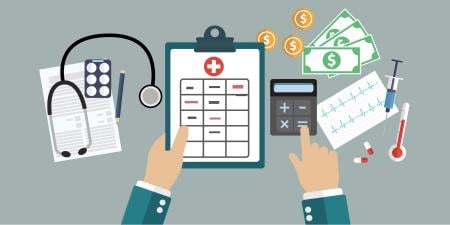Out-of-pocket costs, particularly for prescription medicines, have captured the attention of the nation. Yet the effects of these common costs are frequently overlooked during patient-physician encounters [1]. Despite the considerable relief that the Medicare Modernization Act will provide for many patients 65 years and older, millions of Americans remain burdened by their prescription costs, and this is unlikely to change any time soon.
Many barriers prevent patient-physician communication about prescription costs [2]. For example, patients may think that physicians have little choice but to prescribe certain treatments; physicians may not know what patients' out-of-pocket costs are, and, even if they do, they may feel as though they're caught between a rock and a hard place. Although difficult decisions and tough calls have to be made at times, physicians can often ease patients' drug cost burden considerably.
Strategies to Reduce Patient's Out-of-Pocket Drug Costs
Strategy #1—Critically review medication lists and discontinue nonessential medicines.
All too often patients are taking medicines that are no longer needed but are simply continued due to clinical inertia and a preference towards the status quo. For example, many patients take medicines daily that they could safely regulate and use on an as-needed basis. Treatments for conditions such as mild gastroesophageal reflux, constipation, or degenerative joint disease fall into this category.
Strategy #2—Develop good prescribing habits.
The practice of prescribing is incredibly complex. For a common condition like hypertension more than 150 treatments can be found in a pocket prescription guide. Generic medicines, less expensive than their brand-name counterparts, are available for many of these conditions. Even when patients participate in tiered formulary plans, generic medicines often occupy lower tiers and therefore have lower associated copayments than the corresponding brand-name drugs. Many patients have misconceptions about the clinical equivalence of generic and brand-name drugs, and physicians can play an important role in helping to dispel such myths. Physicians who follow the rules of good prescribing and become familiar with a small number of time-tested, evidence-based, first-line treatments for common conditions are bound to help reduce patients' out-of-pocket costs.
Strategy #3—Prescribe 3-month supplies and tell patients to split pills when appropriate.
Many prescription plans allow participants to order several months' medication at one time. Receiving a 3-month rather than a 1-month supply often enables patients to pay considerably lower annual copayments. In addition, many drugs are amenable to pill splitting; patients can be prescribed higher-dose pills, which cost only slightly more—or even the same as—lower-dose pills and can be instructed to take half a tablet at a time. This can cut drug cost by as much as 50 percent. Medicines with time-release dosing and those for which extremely precise dosing is required may not be amenable to this practice.
Strategy #4—Encourage patients to shop around.
There is considerable variation in the out-of-pocket costs associated with different drugs, depending upon where the prescription is filled. This variation is present across pharmacy chains, individual stores within chains, and Internet drug suppliers. The potential savings that can be realized by comparison shopping will be greatest for the few really expensive medicines that may account for the majority of patients' out-of-pocket costs.
Strategy #5—Use office sample, governmental, and pharmaceutical assistance programs.
Much controversy surrounds the use of manufacturer-supplied office samples and its influence on prescribing practices. Are samples a bane or boon to the practice of good clinical medicine? Regardless of the answer to that question, physicians regularly dispense free samples to help patients lower their prescription costs [3]. These samples may be particularly valuable for time-limited conditions. The caveat is that sample use should not initiate a patient to long-term reliance on a new or relatively expensive brand-name drug when a less-expensive alternative exists. In addition to manufacturer-supplied samples, there are numerous governmental and nongovernmental organizations that assist patients burdened by the cost of pharmaceuticals. Naturally, navigating these programs can be cumbersome and time-consuming for busy physicians, but their utility for select patients in select settings should be recognized.
Strategy #6—Work with patients to prioritize their medicines.
It is well known that up to 50 percent of prescriptions are not filled or not taken as directed and that numerous factors—including illness, treatment side-effects, and out-of-pocket costs—modify adherence. Given this and other evidence that patients prioritize their therapies, physicians must supply information that is vital to patients' decision making. Such an obligation cannot be fulfilled without communication between patients and physicians about their prescription regimens, their out-of-pocket costs, and the other factors they use to determine which therapies to adhere to. Physicians have a choice: allow patients to prioritize their medicines without expert input and possibly threaten their well-being or become more involved in patients' efforts to manage the clinical and economic realities of their prescription regimens.
The Bottom Line
More than 100 years ago, Osler wrote "the desire to take medicine is…really one of the most serious difficulties with which we have to contend. Even in minor ailments, which would yield to dieting or to simple home remedies, the doctor's visit is not thought to be complete without the prescription" [4]. Despite the wisdom in these words, out-of-pocket costs for prescriptions, as well as other tests and treatments, are increasingly recognized as an important barrier to quality of care.
Asking patients whether they are burdened by prescription costs at the point of prescribing offers a valuable opportunity for physicians to establish a climate of concern with their patients and to intervene by the methods described above. Since the majority of patients and physicians wish to discuss patients' out-of-pocket prescription costs, physicians must see to it that communication about such costs is not a neglected topic in clinical medicine [1].
References
- Alexander GC, Casalino LP, Meltzer DO. Patient-physician communication about out-of-pocket costs. JAMA. 2003;290(7):953-958.
- Alexander GC, Casalino LP, Tseng CW, McFadden D, Meltzer DO. Barriers to patient-physician communication about out-of-pocket costs. J Gen Intern Med. 2004;19(8):856-860.
- Alexander GC, Casalino LP, Meltzer DO. Physician strategies to reduce patients' out-of-pocket prescription costs. Arch Intern Med. 2005;165(6):633-636.
-
Osler W. Teaching and thinking. In: Hinohara S, Niki H. Osler's "A Way of Life" and Other Addresses, with Commentary and Annotation. Durham, NC: Duke University Press; 2001:182.



